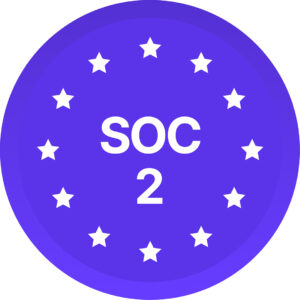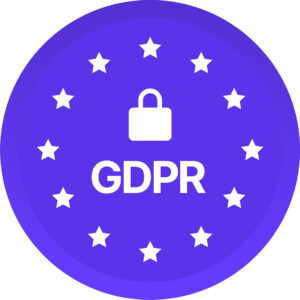Across Diversio’s client base, we’ve seen a consistent pattern emerge: some organizations report engagement scores above 85%, yet still experience declining productivity or stalled performance at the team level. The disconnect raises an important question for HR and business leaders:
How can a highly engaged workforce still underdeliver on business outcomes?
This employee engagement paradox isn’t unique to any single industry. Organizations worldwide are learning a fundamental truth: engagement surveys don’t equal employee motivation. High sentiment scores without sustained discretionary effort yields minimal business value. That is why it is critical to disentangle engagement from motivation.
Why Employee Engagement Surveys Miss the Mark
Traditional engagement surveys capture employee sentiment, not effort. They reveal whether people feel positive about their job, manager, and company, but rarely uncover the nuanced workplace dynamics that drive or drain team performance.
What Engagement Surveys Actually Measure:
- “I would recommend my employer to a friend” – measures perception, not productivity
- “I feel proud to work here” – indicates morale, not necessarily motion
- “I’m satisfied with my role” – reflects contentment, not commitment to excellence
What HR Teams Should Be Measuring Instead:
- “I understand how my work contributes to business goals”
- “I have the resources and support to do my best work”
- “My team’s contributions are recognized and drive real change”
- “I feel psychologically safe to share ideas and take risks”
Without these deeper performance indicators, HR leaders may mistake high engagement scores for high-performing teams, missing critical opportunities for workplace improvement.
The Business Impact of the Engagement-Motivation Gap
Research supports the distinction between engagement and motivation:
Gallup’s findings: Companies with highly engaged teams show 22% higher profitability than those with low engagement. However, this correlation only holds when employee motivation and clear goal alignment follow engagement. For those same teams productivity may lag if motivation falters or social loafing sets in. Sales teams may score high on sentiment yet underdeliver in revenue if individuals hold back or lack clarity on goals.
Real-world example: Forbes documented a team that scored exceptionally high on engagement surveys. They held frequent meetings, discussed innovative ideas, and maintained strong workplace relationships. Yet they consistently fell short on project deliverables because engagement didn’t translate to focused execution.
These examples show why engagement alone is an incomplete signal. To diagnose what’s really happening in a team, we need to dig deeper into what drives effort.
Three Ways High Engagement Masks Low Performance
1. Passive Employee Satisfaction
Employees feel content but not challenged. They appreciate their workplace culture but aren’t motivated to drive improvement or innovation. Result: Performance plateaus despite positive survey responses.
2. Misaligned Team Effort
People work hard but focus on the wrong priorities. Without clear goal alignment or strategic direction, employee energy gets misdirected. Result: High activity levels with minimal business impact.
3. Hidden Employee Burnout
Standard engagement surveys often miss emotional fatigue and mental exhaustion. Employees may report feeling “engaged” while quietly struggling with workload or stress. Result: Declining performance masked by positive sentiment.
In each case, performance suffers despite strong engagement signals.
How Workplace Inclusion Amplifies Employee Motivation
Inclusion is more than a metric, it’s a performance multiplier. Inclusive work environments ensure all employees, regardless of background or identity, have equal access to resources, opportunities, and decision-making processes.
The Business Case for Inclusive Motivation:
- Research from McKinsey: Inclusive companies outperform peers on innovation metrics by 70%
- Deloitte findings: Organizations with inclusive cultures are 2.3x more likely to be high-performing
- Harvard Business Review: Psychological safety (a key inclusion indicator) increases team performance by 67%
The inclusion-motivation connection: A motivated employee in a non-inclusive environment will likely disengage over time. Conversely, an included employee without clear purpose or growth opportunities will plateau. Peak performance requires both strong inclusion AND sustained motivation.
Advanced HR Analytics: Measuring What Matters
To diagnose cultural health beyond surface-level engagement, HR teams need comprehensive workplace analytics that:
1. Identify Team-Level Performance Blockers
- Manager effectiveness scores across different demographic groups
- Resource accessibility gaps by department or role level
- Goal clarity ratings correlated with actual output metrics
2. Analyze Employee Feedback for Actionable Insights
- Natural language processing of open-text survey responses
- Sentiment analysis to detect emotional tone and underlying concerns
- Predictive analytics to identify flight risk before turnover occurs
3. Measure Goal Clarity, Manager Impact & Psychological Safety
- Belonging scores segmented by identity groups
- Voice and influence metrics across organizational levels
- Bias detection in performance reviews and promotion decisions
Equally important is closing the loop, turning those insights into action quickly, before momentum is lost.
Practical Steps to Close the Motivation Gap
To identify where the gap lives we can use several approaches:
1. Diagnose Survey-Performance Disconnects
Action: Identify teams with high engagement scores but low self-reported clarity, alignment, or effort levels. Cross-reference with actual productivity metrics and manager assessments.
2. Observe Behaviors Beyond Participation
Question to ask: Are employees attending meetings but lacking follow-through on commitments? High participation doesn’t equal high contribution.
3. Train Managers to Recognize Authentic Effort
Focus area: Help managers distinguish between performative productivity (looking busy) and genuine discretionary effort (driving results).
4. Implement Continuous Feedback Loops
Best practice: Transform insights into action quickly, before employee momentum is lost. Regular pulse surveys with immediate manager coaching work better than annual engagement assessments.
The Culture Performance Formula: Motivation × Inclusion
When you view organizational culture as the product of motivation multiplied by inclusion, it becomes easier to diagnose what’s missing—whether that’s focused effort, strategic clarity, or equitable treatment.
However, identifying root causes is only the beginning. The key is translating workforce insights into measurable behavior change.
Introducing the Inclusive Culture Toolkit
Recognizing the need for deeper cultural diagnostics, we developed the Inclusive Culture Toolkit, a comprehensive solution for People teams ready to move beyond surface-level engagement metrics.
What the Toolkit Delivers:
- Team-level motivation analysis: Identify specific blockers to performance and engagement
- Inclusion gap assessment: Uncover experience disparities across demographics and job levels
- Executive-ready insights: Data-driven action plans tied to measurable behavior change
- Manager enablement: Targeted coaching recommendations based on team-specific findings
- ROI tracking: Monitor culture improvements through productivity and retention metrics
Organizations using this toolkit have successfully aligned leadership teams, removed hidden workplace friction, and achieved measurable performance improvements—all without lengthy consulting engagements or abstract culture roadmaps.
The Bottom Line: Engagement Is Just the Starting Point
High employee engagement creates a foundation for workplace success, but it’s not sufficient on its own. Without corresponding motivation and inclusive practices, even the most “engaged” culture may be limiting your organization’s potential.
The companies that will thrive in the coming years are those that master the complete equation: sustained employee motivation within genuinely inclusive environments. Everything else is just measuring sentiment.
Ready to diagnose your organization’s motivation gap? Contact our team to learn how the Inclusive Culture Toolkit can transform your People strategy from reactive to predictive.

